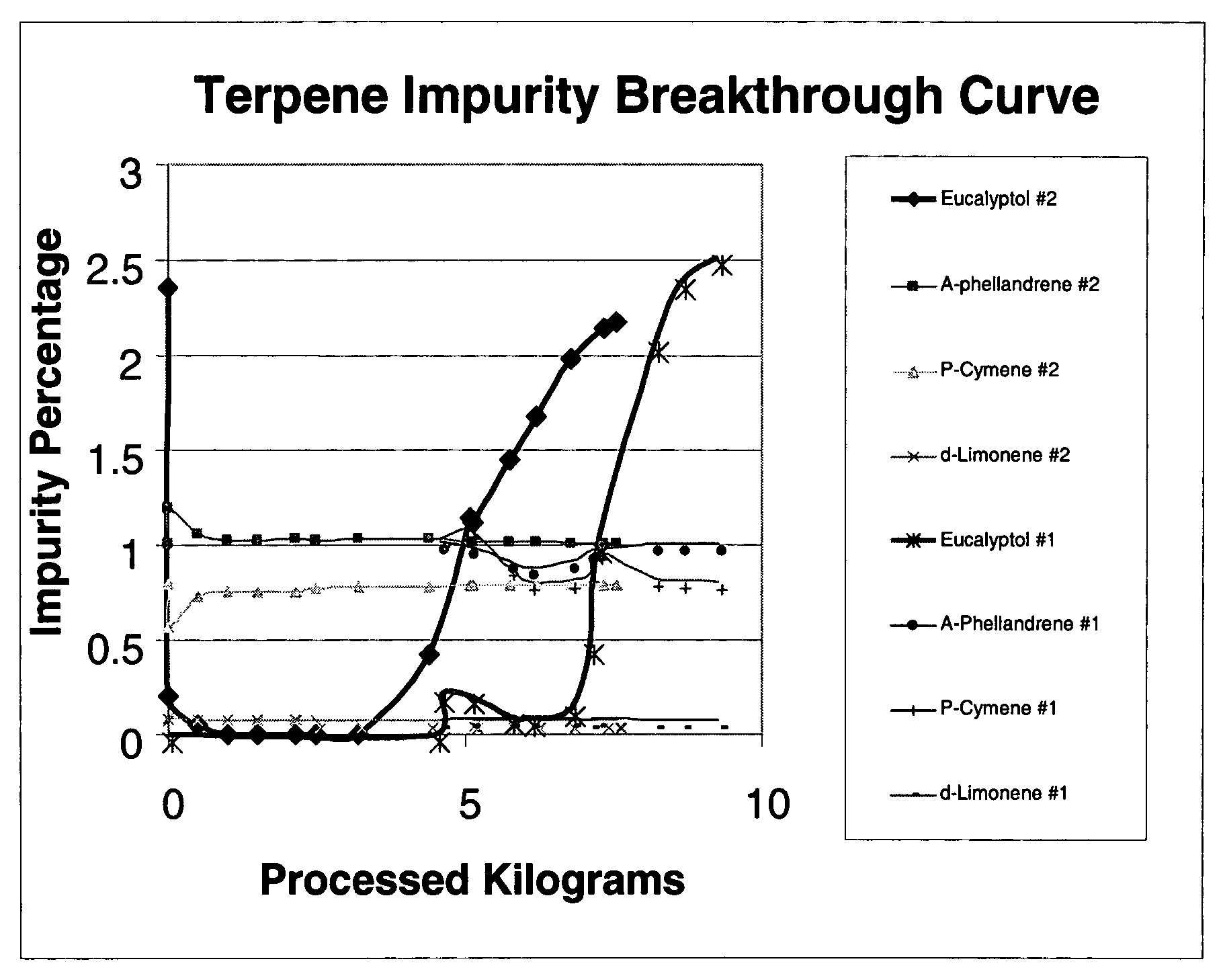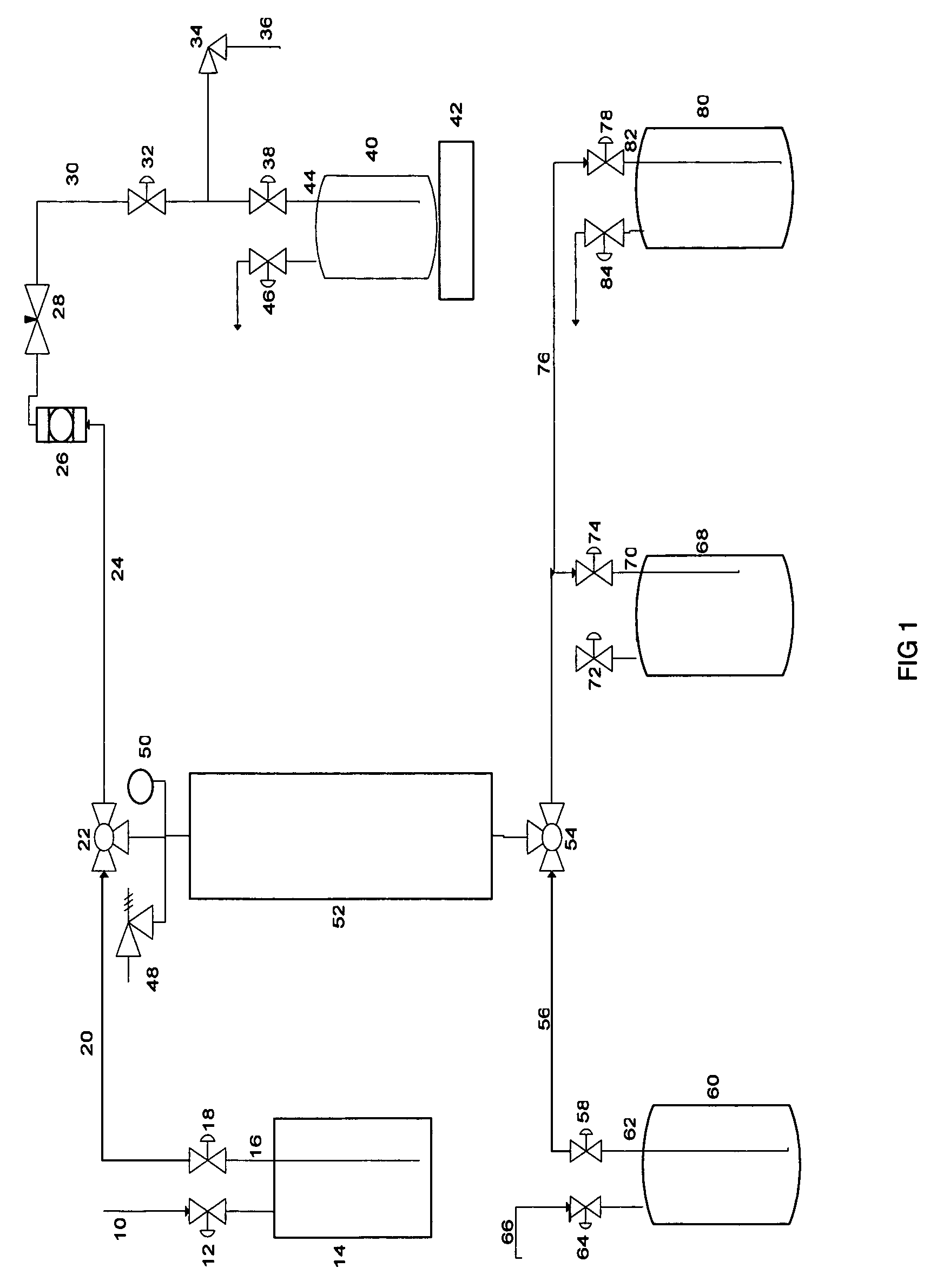Selective purification of mono-terpenes for removal of oxygen containing species
a technology of monoterpenes and oxygen, applied in the direction of ion-exchangers, organic chemistry, separation processes, etc., can solve the problems of ineffective traditional methods for removing impurities, such as distillation, and the inability to produce high-purity monoterpenes for use in electronic materials of construction for integrated circuits
- Summary
- Abstract
- Description
- Claims
- Application Information
AI Technical Summary
Benefits of technology
Problems solved by technology
Method used
Image
Examples
Embodiment Construction
[0014]The present invention is a novel process that was developed to purify preferably C10H16 mono-terpenes, which are useful as porogens in porous silicon oxide dielectric film deposition processes using silicon oxide precursors, such as diethoxymethylsilane (DEMS) for manufacture of integrated circuits for electronic device fabrication;
[0015]Two porogens that are commonly used are alpha-Terpinene and d-Limonene. Both porogen species are extracted from natural products, wood chips and citrus peels respectively and contain several impurities of varying levels. Commercially available grades of these materials are typically quite poor, compared to typical semiconductor precursors, as the main usage is for flavor and aroma products. Alpha-Terpinene purity varies from 90-95% for the highest quality material on the market and contains four major impurities: alpha-Phellandrene (C10H16), d-Limonene (C10H16), para-Cymene (C10H14) and 1,8-Cineole (Eucalyptol) or possibly 1,4-Cineole
[0016]The...
PUM
| Property | Measurement | Unit |
|---|---|---|
| pressures | aaaaa | aaaaa |
| boiling points | aaaaa | aaaaa |
| boiling point | aaaaa | aaaaa |
Abstract
Description
Claims
Application Information
 Login to View More
Login to View More - R&D
- Intellectual Property
- Life Sciences
- Materials
- Tech Scout
- Unparalleled Data Quality
- Higher Quality Content
- 60% Fewer Hallucinations
Browse by: Latest US Patents, China's latest patents, Technical Efficacy Thesaurus, Application Domain, Technology Topic, Popular Technical Reports.
© 2025 PatSnap. All rights reserved.Legal|Privacy policy|Modern Slavery Act Transparency Statement|Sitemap|About US| Contact US: help@patsnap.com



